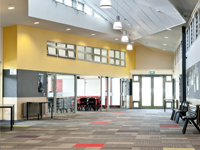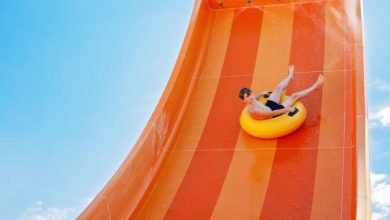Breaking out of the box – An introduction to the principles of Modern Learning Environments

 In the field of educational facilities I believe we are on the cusp of a major change in both thinking and delivery.
In the field of educational facilities I believe we are on the cusp of a major change in both thinking and delivery.
From small refurbishments right through to the major rebuilding projects in Christchurch and around the country, there is now a very real opportunity to transform the delivery of teaching and learning; to break out of the educational box that is the traditional classroom and deliver a truly Modern Learning Environment (MLE) fit for the 21st Century.
So what is this brave new world?
Well actually the concepts of the MLE have been around for some time. It is just that now there is a wide spread focus for improving the delivery of education, and a realisation that school buildings should perform beyond just basic shelter and when designed as holistic learning environments can really make a difference. The benefits of this physical transformation can have a profound impact in facilitating both student motivation and curriculum delivery. When school buildings are designed with MLE principles at their core they can inspire great teaching and learning.
So what are the key principles of MLE?
Well, in one word it is building in flexibility. This is important at all scales. From the whole school campus to the smallest detail this principle is critical to the delivery of this new school paradigm. Creating flexible spaces that accommodate a wide range of current and future teaching and learning styles is the key. While we cannot anticipate all of the future needs for educational facilities we can know with certainty that they will change. Teaching spaces that can be adapted and support the educational agility of teachers and students will be an environment that can deliver outstanding educational outcomes. We should not get stuck with replicating ‘business as usual’ solutions when we could have spaces that support innovation and creative learning.
But it is also clear that flexibility is not enough. MLE implementation demands that you take a holistic view. So here are my top tips for delivering a MLE for your school
Masterplan
Starting with the end in mind.
The 10YPP process is a great place to start with not only a financial model for capital expenditure over the next 10 years but also an evaluation of the educational pedagogy for your learning community and a holistic spatial school masterplan to support that learning. For a modest outlay a spatial masterplan of your school campus can look at how MLE can be implemented across the site over time, and how even small projects can unlock great teaching and learning opportunities. The best outcomes come when all of these factors are considered in school development – education, the learning environments and of course the budget. No matter what size your future projects may be, this holistic approach is crucial. And remember always keep this long-term vision in mind.
The Learning Community
The modern learning environment can gain significant benefits from being designed for the community it serves. While funding is a one-size-fits-all model, the project team can actually deliver a project that reflects and supports the wider school community. And when a school is designed as a learning community it is a powerful way to engage with students, staff and parents.
Classroom / Learning Studio
As above one of the key principles of the MLE is flexibility and this is in fact a license to fundamentally reconsider the role and relationship of the traditional classroom – so why not break out of the box!
While a classroom may still have a place in your school, it can offer so much more when combined with other spaces such as small seminar or breakout rooms, group learning areas or even external learning decks can offer the opportunity for a wide variety of learning styles. Adjacencies and visibility are so important in making this work well.
Circulation as Learning Space
Your school real estate can be dominated by the corridor with some schools having 30 per cent of their footprint just for getting from A to B. Why not reclaim your circulation spaces to teaching and learning. The key is being able to have visibility from the new learning studios as through careful design these corridors can be transformed into spaces that support a wide variety of learning opportunities.
Group Learning Areas
Group learning spaces can take over from the corridor for circulation but also create wonderful opportunities for teaching and learning at different scales – from small groups or combined classes. They can also be a powerful physical manifestation of the learning community described above, and surrounded by visible learning studios and small seminar / breakout rooms they support the flexible, agile leaning of the future.
Outdoor Learning Environment
Often the external spaces for the school are an afterthought and yet they represent a fantastic opportunity to create great learning spaces. The key is visibility. The power of passive surveillance through being able to remotely supervise a space through good visibility can transform behaviours and learning outcomes. Careful thought by designers can unlock the potential of the neglected areas in your school grounds, bringing them back into the overall learning environment.
And one last point. No matter how large or small your building projects you can always look for the opportunities to support transformational change in the learning environment. School buildings should support and inspire the wonderful learning opportunities that can happen in and around them. As I have said before, one of my proudest moments as an architect was to get feedback from one of the students; “I might do better – it’s a better school now”. It is that sense of hope that should be legacy of this renewed focus on delivering a Modern Learning Environment. So next time you are planning a building project remember to break out of the box!
By Bruce Curtain, Principal Architect specializing in public buildings and global Opus Sustainability Manager.









